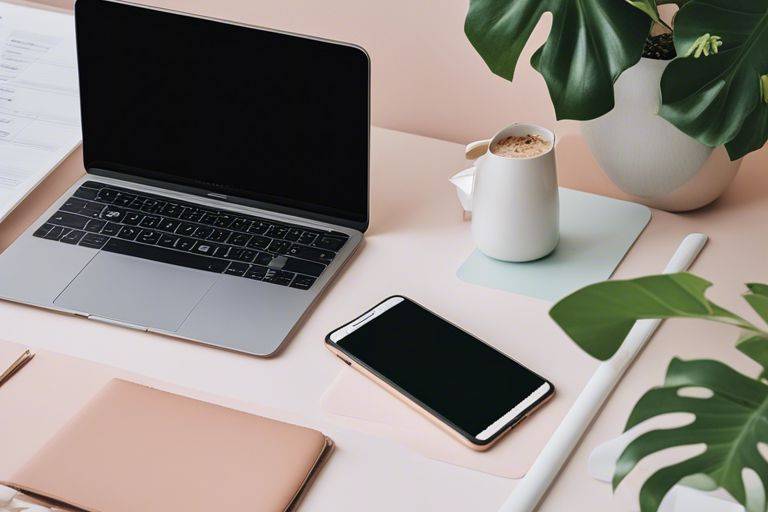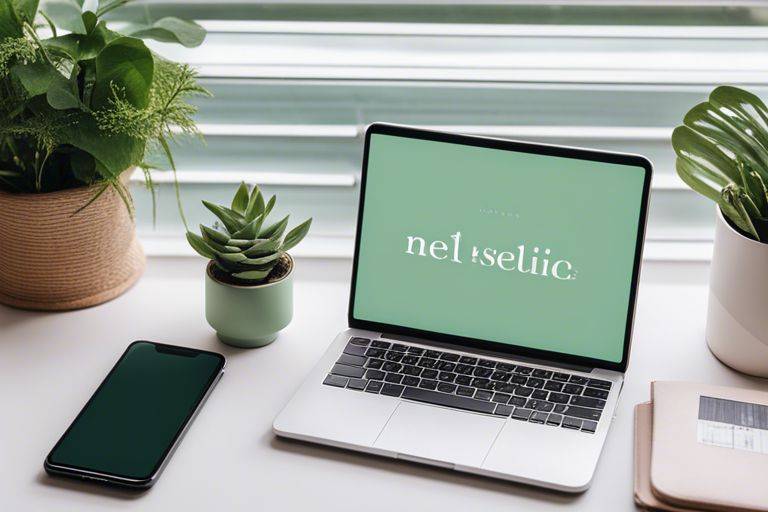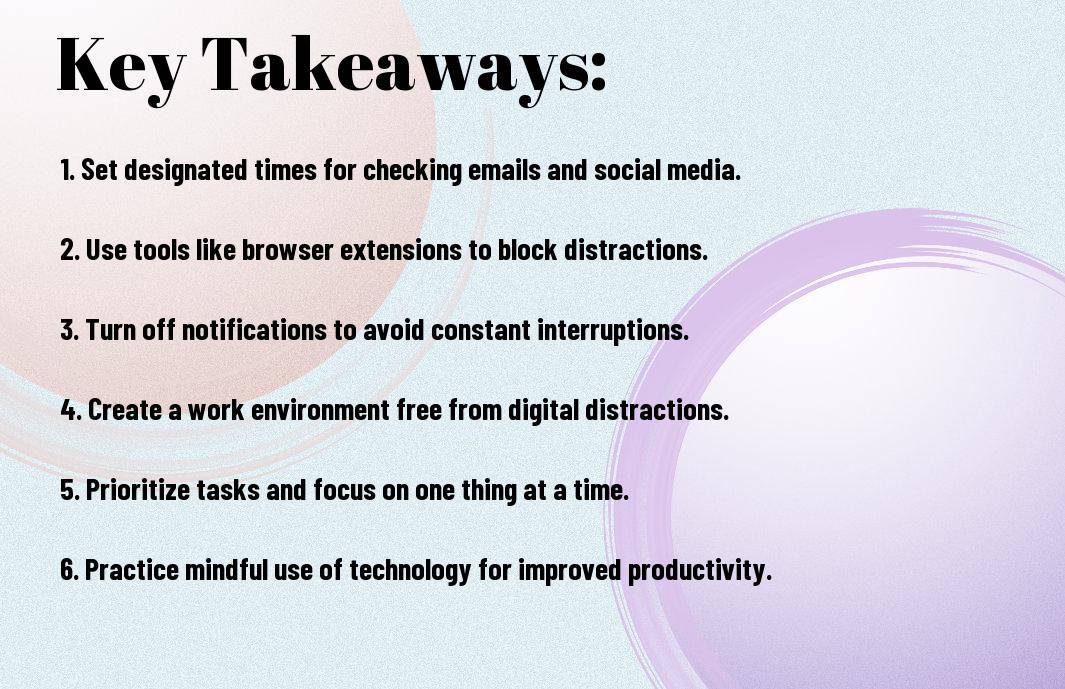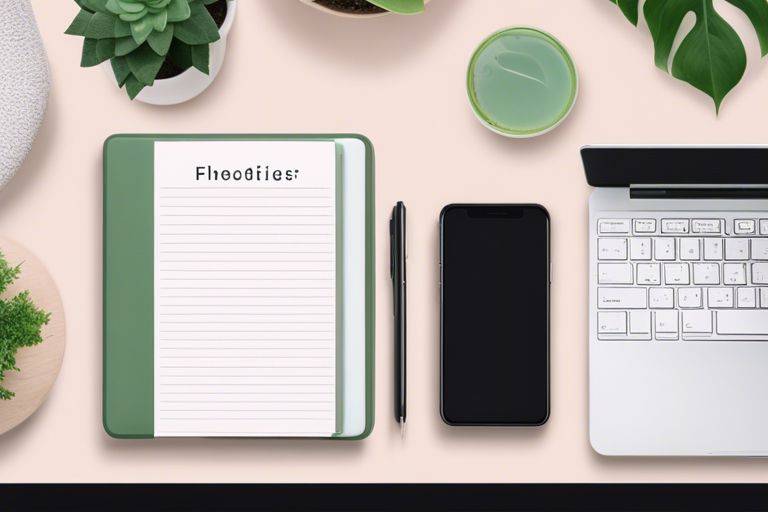
Newsletter Subscribe
Enter your email address below and subscribe to our newsletter

Enter your email address below and subscribe to our newsletter

How to Reduce Distractions and Improve Focus! It’s no secret that the constant bombardment of emails and social media notifications can severely hinder productivity and focus. Research has shown that the average person checks their email and social media accounts multiple times an hour, leading to frequent distractions and a loss of concentration. In today’s fast-paced digital age, learning how to limit these distractions is crucial for maintaining efficiency and mental clarity.



The constant ping of new email notifications or the urge to check social media feeds can be a significant source of distraction in our daily lives. These digital interruptions are more than just minor inconveniences; they can have a profound impact on our ability to focus and concentrate on tasks at hand. The psychology behind these interruptions lies in the way our brains are wired to seek out immediate rewards and stimuli.
To fully understand the extent of the impact of email and social media on our daily lives, consider these staggering statistics: The average person checks their email 15 times a day and spends over 2 hours on social media platforms daily. This constant need for digital connection not only affects our productivity but also our mental well-being. Studies have shown that excessive social media use can lead to feelings of loneliness and depression.
Impact: It’s crucial to recognize the detrimental effects that excessive email and social media use can have on our focus and overall well-being. By understanding the psychology behind digital interruptions and being aware of the statistics highlighting these impacts, individuals can take proactive steps to limit their screen time and create healthier habits for improved focus and productivity.
One of the most popular email management strategies is the Inbox Zero philosophy. This approach involves keeping your email inbox empty or close to empty at all times by regularly processing and organizing incoming emails. The idea is to quickly respond, delete, delegate, or file away emails to maintain a clutter-free inbox.
Philosophy: To streamline your email organization process, consider setting up effective email filters. These filters automatically sort incoming emails based on criteria you set, such as sender, subject line, or keywords. By directing emails to specific folders or labels, you can prioritize important messages and reduce the time spent sorting through your inbox.
Inbox filters can be particularly helpful in managing newsletters, promotions, and other non-urgent emails. By creating rules to automatically categorize or archive these emails, you can prevent them from cluttering your main inbox and distracting you from important messages.
With scheduled email check-ins, you can proactively manage your email workflow by setting specific times during the day to review and respond to emails. In between these check-ins, you can focus on other tasks without the constant interruption of incoming messages.
It’s important to establish boundaries and stick to your predetermined email schedule to avoid distractions and maintain productivity. By limiting the frequency of email access, you can train yourself and others to respect your time and prioritize communication effectively.
Scheduled responses: Setting aside dedicated time slots for responding to emails can help you maintain a timely and organized approach to communication. By batching email tasks, you can avoid the temptation to constantly check your inbox and instead focus on more important priorities.
The key to effective email management is to establish a routine that works for you and promotes efficiency. By implementing these strategies, you can reduce distractions, improve focus, and enhance your overall productivity in both personal and professional email communication.
Not all social media time is created equal. While it can be a valuable tool for staying connected and informed, excessive use of social media can lead to distractions, decreased productivity, and even negative impacts on mental health. It is imperative to find a balance that allows you to leverage the benefits of social media without succumbing to its pitfalls.
On the one hand, social media platforms offer a convenient way to stay in touch with friends, family, colleagues, and industry peers. They provide a space for networking, sharing ideas, and accessing news and updates in real-time. On the other hand, excessive use of social media can lead to a constant state of distraction, comparison, and information overload, affecting both professional performance and personal well-being.
Media consumption is often a habit that requires conscious effort to control. Consider using apps and tools that allow you to set time limits on your social media usage or block access to certain platforms during specific hours. By tracking your usage patterns and setting clear boundaries, you can regain control over your time and attention.
It’s important to be selective about the content you consume on social media. Unfollow accounts that do not add value to your life or contribute to feelings of negativity. By curating a feed that aligns with your interests and goals, you can make your social media experience more meaningful and productive.
With mindful social networking, the focus shifts from mindless scrolling to intentional engagement. Instead of passively consuming content, take the time to interact meaningfully with posts that resonate with you. By fostering genuine connections and conversations, you can enhance the quality of your online interactions and reduce the time spent on superficial browsing.
Social media platforms are designed to keep users engaged for as long as possible, often through features like endless scrolling and notifications. By practicing mindfulness and setting specific goals for your social media use, you can prevent these platforms from becoming a source of distraction and regain control over your online habits.
Not all social media time is created equal. While it can be a valuable tool for staying connected and informed, excessive use of social media can lead to distractions, decreased productivity, and even negative impacts on mental health. It is imperative to find a balance that allows you to leverage the benefits of social media without succumbing to its pitfalls.
This proactive approach to managing your social media usage will help you maintain a healthy relationship with technology and prioritize meaningful interactions both online and offline.

After acknowledging the challenges of staying focused in a digital world filled with distractions, it’s crucial to explore tools that can help combat these interruptions. Apps and browser extensions such as StayFocusd, Freedom, and Mindful Browsing can be incredibly effective in blocking access to distracting websites and apps during designated work periods. By setting specific time limits or blocking certain sites altogether, individuals can create a more focused work environment and reduce the temptation to stray off-task.
Leveraging the ‘Do Not Disturb’ features on your devices can significantly reduce interruptions and improve your ability to concentrate on important tasks. Any incoming calls, messages, or notifications can be temporarily silenced, allowing you to work without constant disruptions. By customizing the settings to only allow notifications from crucial contacts or during specific periods, you can strike a balance between staying connected and maintaining focus.
Plus, integrating ‘Do Not Disturb’ features into your daily routine can help establish boundaries between work and personal time, promoting a healthier balance and reducing the urge to constantly check your devices for updates.
With the proliferation of productivity tools and time-management apps, individuals have a wealth of resources at their fingertips to help them track and manage their time effectively. Utilizing apps like Toggl, RescueTime, or Forest can provide valuable insights into how time is spent each day and identify opportunities for improvement. By analyzing productivity patterns and setting goals for focused work sessions, individuals can optimize their time and achieve greater efficiency in their tasks.
that By incorporating these technology-driven solutions into your daily workflow, you can enhance your ability to stay focused, minimize distractions, and ultimately increase your productivity and overall well-being.
Many of us are constantly connected to our devices, whether it’s checking emails, scrolling through social media, or watching videos. This constant barrage of digital information can lead to decreased productivity, increased stress, and a lack of focus. Digital detox refers to taking a break from technology to recharge, reset, and reconnect with the world around us. The benefits of digital detox include improved concentration, enhanced creativity, better sleep quality, reduced anxiety, and increased mindfulness.
Any successful digital detox begins with setting clear goals and boundaries for your tech use. Start by identifying the specific areas of digital consumption that you want to reduce or eliminate. Create a realistic timeline for your detox period, taking into account any commitments you may have. Inform your friends, family, and colleagues about your digital detox plan to ensure accountability and support.
With the right strategies in place, you can gradually reduce your screen time and replace it with more productive and fulfilling activities. Schedule regular breaks from technology, engage in outdoor activities, practice mindfulness or meditation, and spend quality time with loved ones. By actively seeking alternatives to digital entertainment and distractions, you can reclaim your time and focus on what truly matters.
Any time spent away from digital devices can be used for activities that promote well-being and personal growth. Power down your devices and pick up a book, go for a walk or run, try a new hobby, or engage in creative pursuits like painting or writing. Unplugging from technology allows you to be present in the moment, cultivate deeper relationships, and discover new interests that can enrich your life in meaningful ways.
Your digital devices are a central part of your life, but setting boundaries is crucial to avoid being constantly distracted. Designate specific times for checking emails and social media to prevent them from encroaching on other important aspects of your day. Implementing digital detox days or hours where you disconnect completely can help reset your focus and reduce dependency on screens. Consider turning off notifications or using apps that limit your time spent on certain platforms to regain control over your digital habits.
For sustained well-being, it’s vital to nurture real-world relationships alongside digital interactions. Make time for face-to-face interactions with friends and family to deepen connections and foster emotional bonds. Personal interactions provide a sense of belonging, reduce feelings of isolation, and contribute to your overall mental health. Prioritize quality time spent offline to cultivate meaningful relationships that go beyond superficial digital connections.
For some, spending excessive time online can lead to feelings of loneliness or disconnection, highlighting the importance of balancing digital interactions with real-world engagements. It’s imperative to recognize the value of in-person connections for your emotional well-being and mental health.
Clear boundaries between work and leisure are imperative in a digital age where the line between the two can easily blur. Establishing specific work hours and designated relaxation time can help maintain a healthy balance between productivity and personal well-being. Avoid checking emails or engaging in work-related tasks during your downtime to allow your mind to rest and recharge. Finding a harmony between work and relaxation is key to avoiding burnout and maintaining overall productivity.
An imbalance between work and relaxation can lead to decreased productivity, increased stress levels, and overall dissatisfaction with both professional and personal life. It’s crucial to prioritize self-care and allocate time for activities that promote relaxation and mental clarity alongside your work responsibilities.
Environments play a crucial role in shaping employee behavior and productivity. Organizations can foster focused work environments by promoting a culture that values deep work and concentration. This can be achieved by providing designated quiet areas for employees to work without interruptions, encouraging open communication about the importance of focused work, and setting clear expectations for when it is appropriate to use email and social media.
Organizational policies on email and social media usage can have a significant impact on employee distraction levels. By implementing strict guidelines on when and how these tools should be used during work hours, companies can help employees stay focused on their tasks. Limiting access to email and social media during certain times of the day or setting specific time limits for usage can help prevent distractions and improve overall productivity.
Fostering a culture of mindfulness and intentionality around digital communication can also contribute to reducing distractions. By encouraging employees to think critically about the relevance and importance of their interactions online, organizations can help them prioritize their time and focus on high-impact tasks.
Social media and digital distractions are ubiquitous in today’s workplace, making it necessary for companies to provide training on how to manage these distractions effectively. This training can include tips on time management, setting boundaries with technology, and developing strategies to maintain focus amidst constant interruptions.
The key to success lies in empowering employees to take control of their digital behaviors and equipping them with the tools they need to navigate distractions in a proactive manner. By investing in training programs that address these challenges head-on, organizations can create a more focused and productive workforce.
Drawing together various strategies to reduce distractions and improve focus, it is clear that limiting email and social media usage plays a significant role in enhancing productivity in both personal and professional settings. By setting boundaries, utilizing tools to manage notifications, and allocating specific times for checking emails and social media, individuals can regain control over their attention and become more efficient in their tasks. For more tips on increasing focus and reducing distractions, visit How to Increase Your Focus and Not Get Distracted.
A: It is important to limit email and social media to reduce distractions and improve focus. Constant notifications and updates can disrupt our workflow and decrease productivity.
A: Excessive email and social media usage can lead to procrastination, increased stress levels, decreased attention span, and reduced quality of work.
A: Some strategies to reduce distractions include setting specific times to check emails and social media, turning off notifications, and using website blockers to limit access.
A: Setting boundaries such as restricting usage to certain times of the day or implementing tech-free zones can help in reducing the time spent on email and social media.
A: Yes, unsubscribing from unnecessary email subscriptions can declutter your inbox and reduce the temptation to constantly check for new emails.
A: Mindfulness helps in becoming more aware of how email and social media usage affects our focus and well-being, enabling us to make conscious choices on when and how we engage with these platforms.
A: By limiting email and social media, one can create a focused work environment that promotes deep work, enhances concentration, and boosts overall productivity levels.
Unmatched Productivity – Ultimate Guide to Harnessing Your Second Brain
Eat That Frog – Brian Tracy’s Approach to Tackling the Most Challenging Task First
Pomodoro Technique – Francesco Cirillo’s Method to Improve Focus and Manage Time
Unlocking the Zeigarnik Effect: How Bluma Zeigarnik’s Open Tasks Can Skyrocket Your Motivation
Night Before Planning – Preparing for Next-Day Productivity the Night Before